In the field, operations often unfold chapter by chapter. Such was the case with this magnificent bull elephant.
The first chapter began on the 20th June, when our SWT/KWS Tsavo Mobile Vet Unit was called to treat him for a nasty wound from a sharp object on his ankle. He had marauded onto community lands bordering the Tsavo Conservation Area and, like so many wild animals that leave the protection of the park, had become embroiled in human-wildlife conflict. After successfully tending to his wound, we resolved to monitor the patient, poised to offer follow-up treatment and translocation, but hopeful that he would return to the park of his own accord.
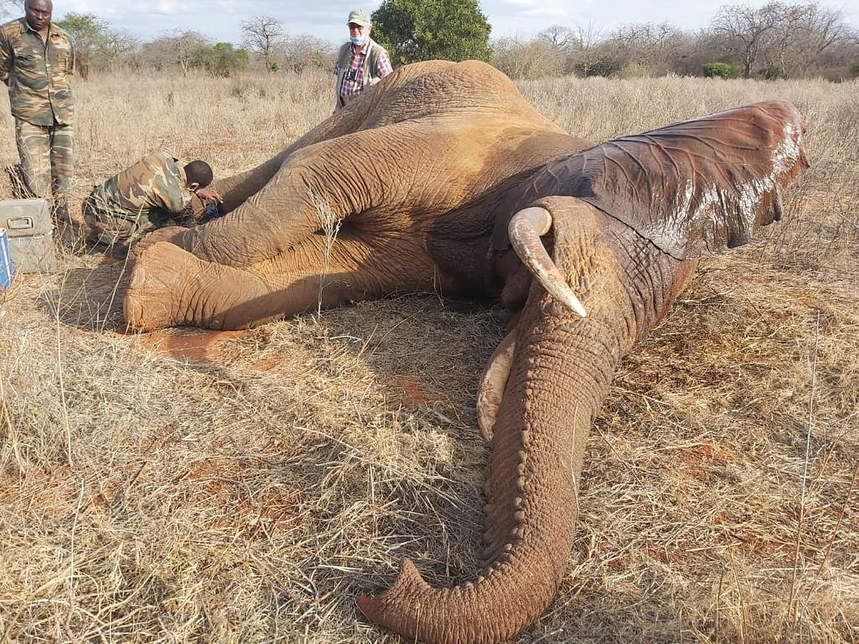
The bull’s first treatment on 20th June
By July, however, he had become a fixture in the community — but a problematic one. His scheduled follow-up treatment on the 12th July provided a perfect window of opportunity to re-address his wounds and simultaneously move him back into Tsavo National Park. (Unless critical, we always allow a minimum of two weeks between treatments requiring anaesthetic, this ensures all of the original drug has left a patient’s system prior to any subsequent anaesthesia being administered).
Of course, translocating a full-grown elephant is no small feat. While Dr. Poghon darted him from the SWT helicopter, KWS and SWT ground teams assembled at the scene. As soon as the patient succumbed to the anaesthetic, they moved in. The first order of business was to clean and disinfect the wound on his foot, which required additional treatment. With that vital step completed, the team secured the patient with elephant straps, so he could be carefully lifted onto the bed of our crane truck, avoiding his injured ankle. This vehicle, which was created specifically for this type of operation, has been a transformative addition to our fleet. Two KWS vets were on the truck to ensure he remained safely asleep and secure throughout the journey.
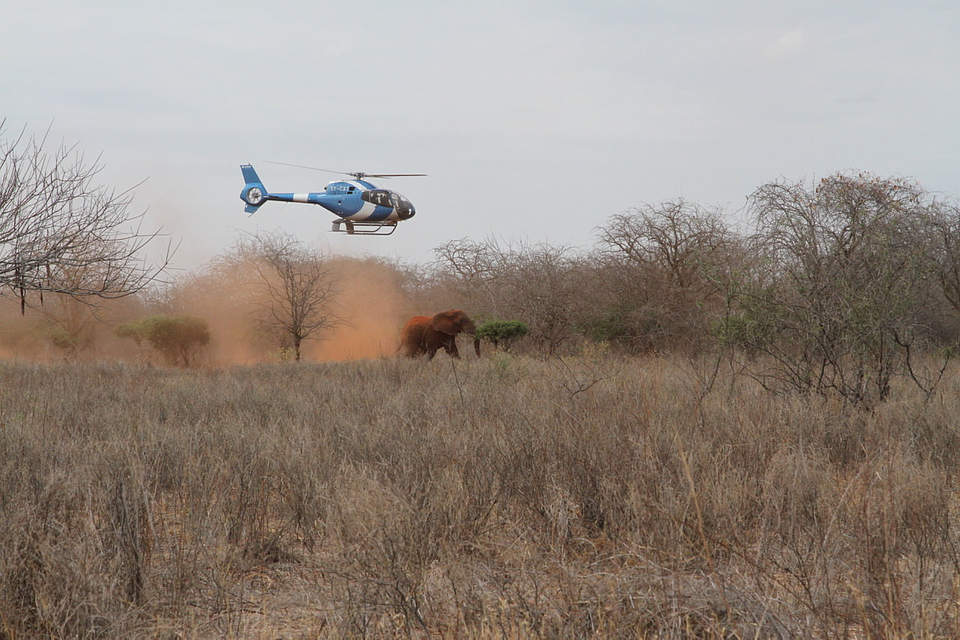
Dr. Poghon darts the elephants from the SWT helicopter
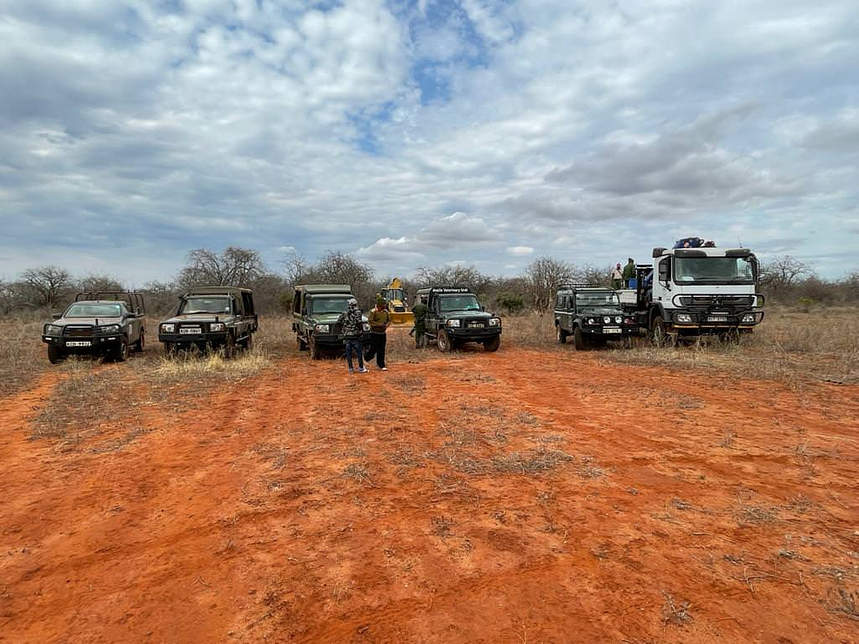
Grounds teams ready to move in once the anaesthetic takes effect
While the bull’s presence had certainly caused angst within the community, he was treated to a full farewell party as the truck made its way down the road. The convoy really set heads turning when it turned onto the Nairobi-Mombasa Highway, a busy artery that cuts through Tsavo East and Tsavo West National Parks. At last, the convoy entered the safety of Tsavo West, where this lucky elephant would reclaim his place in a vast, protected wilderness.
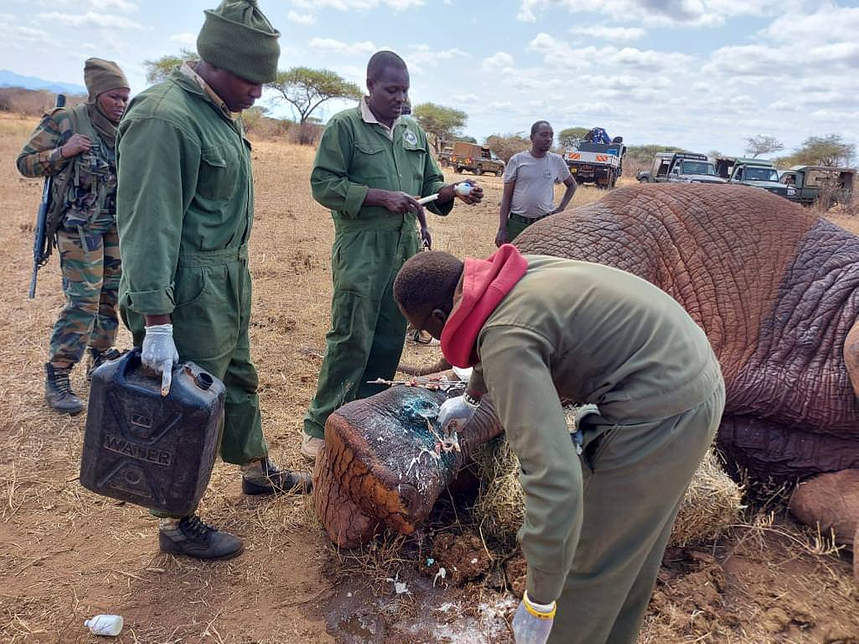
SWT/KWS Tsavo Vet Team assess and retreat the wound
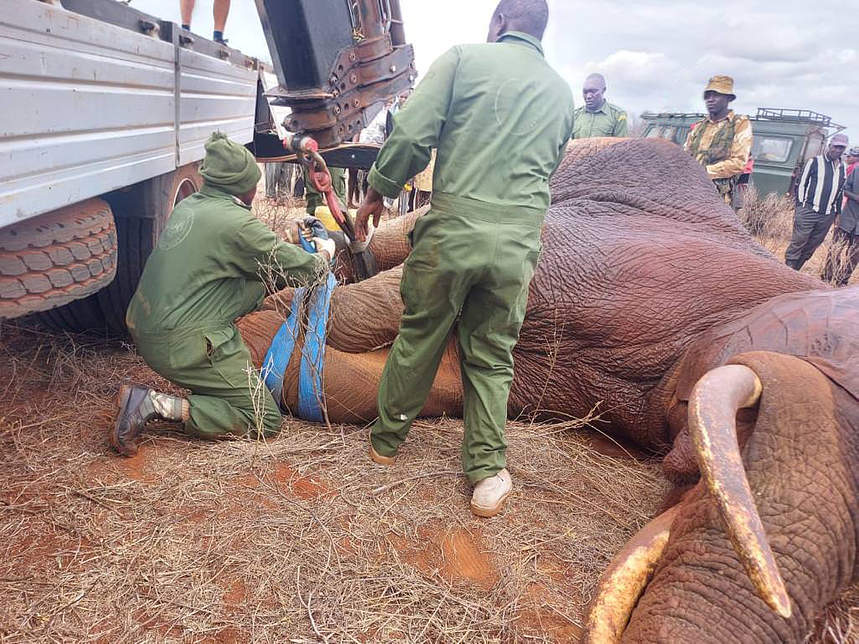
Our specialist elephant crane truck is used to carry the patient to a protected area
We released the bull near a waterhole, frequented by lots of other elephants, close to the base of our Mtito Anti-Poaching Team so that he can be closely monitored, and fed supplementary lucerne, saving him having to walk too far in search of browse. This location ensured he would have the resources and oversight at hand to make his transition a successful one.
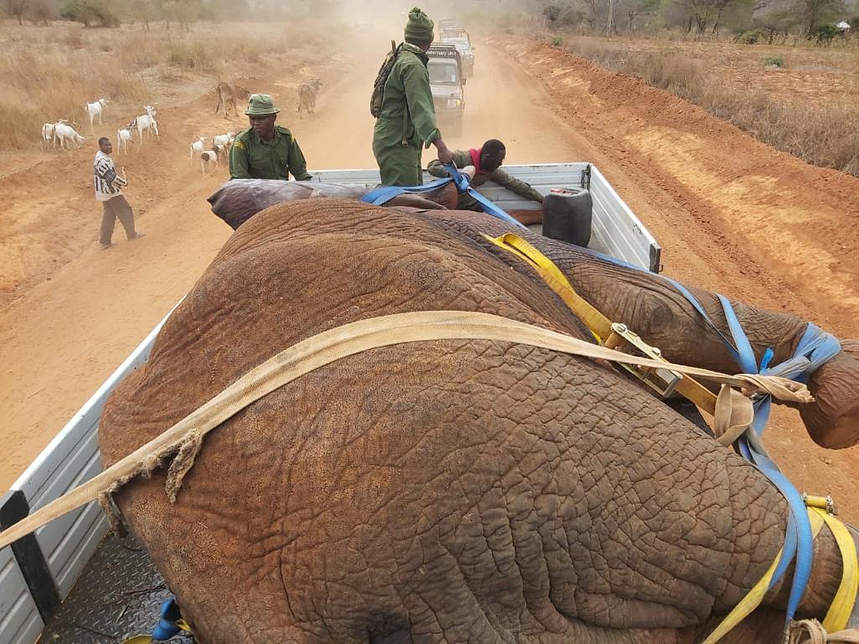
Safely loaded, with vets in attendance, the team heads out of community land
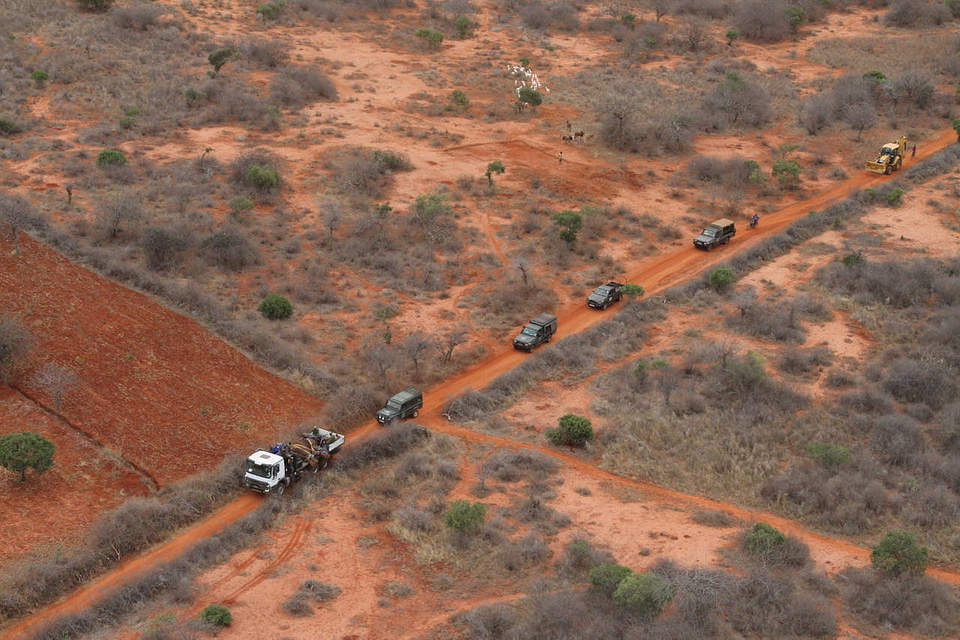
The elephant and his escort
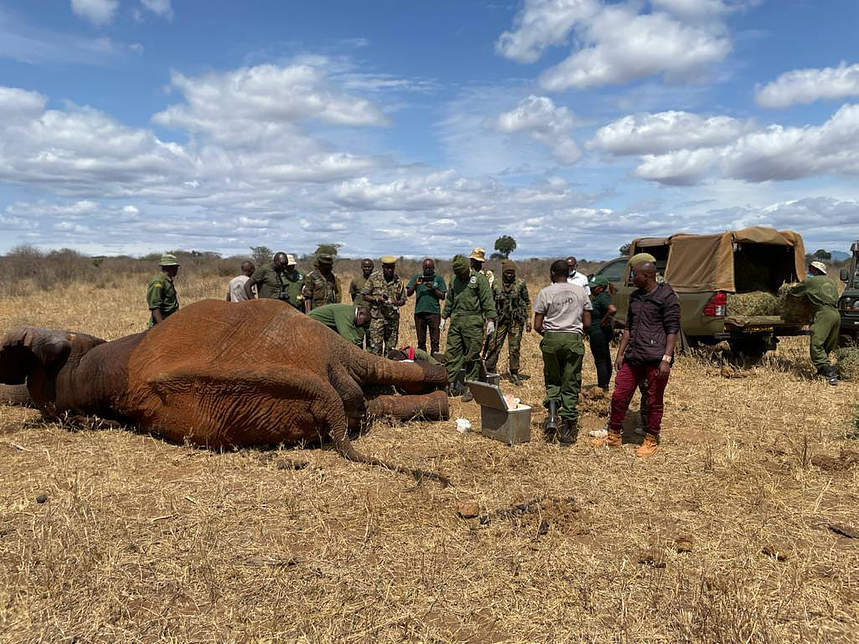
Final checks on the patient before he is revived, having been translocated to Tsavo West National Park
This operation demonstrated how important translocation abilities are to help save wild lives and protect a community’s livelihood. Given the densely populated area in which he had settled, shepherding him out with a helicopter simply wasn’t an option. For these types of situations, translocation means the difference between life and death. Together with KWS the Trust has worked towards establishing a robust unit for this sort of eventuality and we are pleased to offer a viable solution for these complex human-wildlife conflict situations.